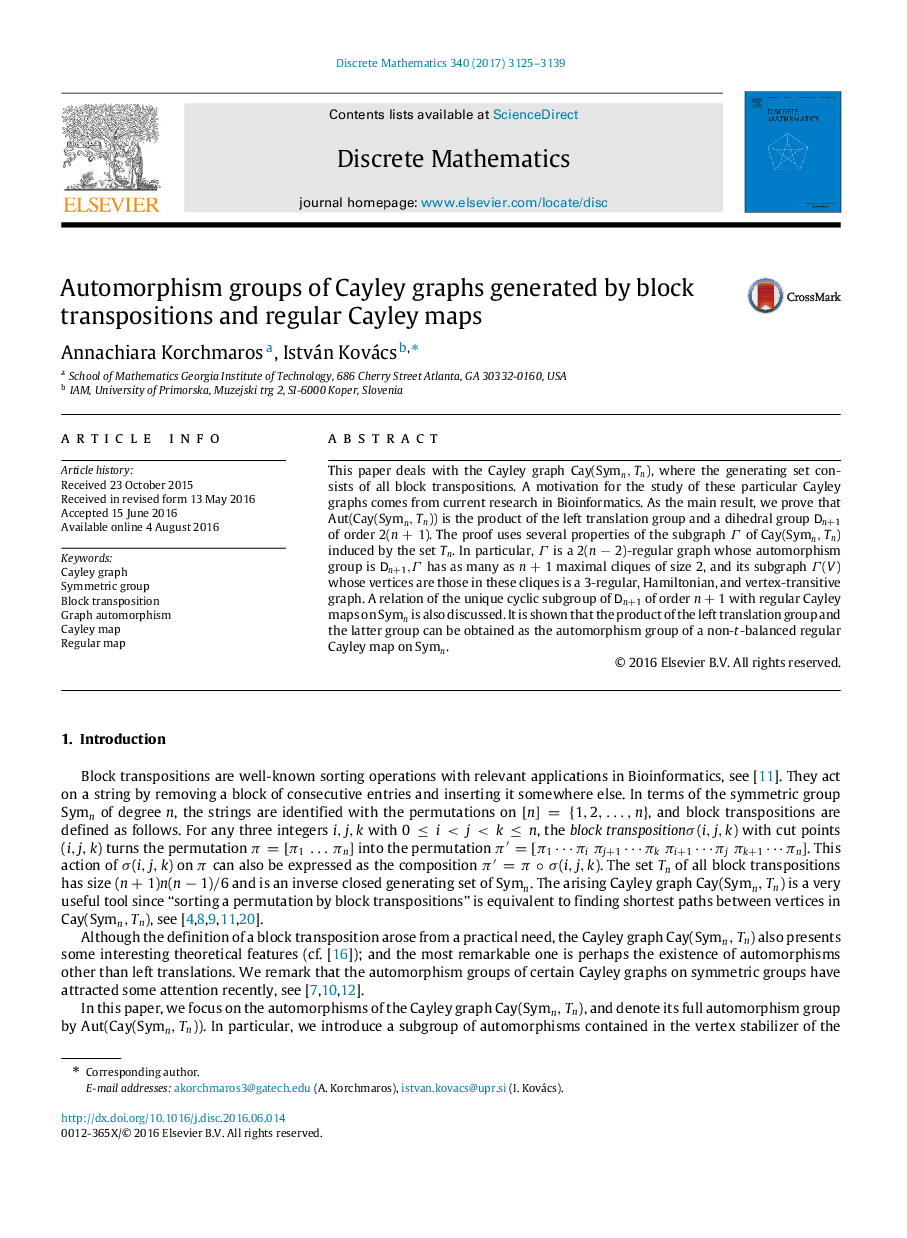| Article ID | Journal | Published Year | Pages | File Type |
|---|---|---|---|---|
| 4646726 | Discrete Mathematics | 2017 | 15 Pages |
This paper deals with the Cayley graph Cay(Symn,Tn)Cay(Symn,Tn), where the generating set consists of all block transpositions. A motivation for the study of these particular Cayley graphs comes from current research in Bioinformatics. As the main result, we prove that Aut(Cay(Symn,Tn))Aut(Cay(Symn,Tn)) is the product of the left translation group and a dihedral group Dn+1Dn+1 of order 2(n+1)2(n+1). The proof uses several properties of the subgraph ΓΓ of Cay(Symn,Tn)Cay(Symn,Tn) induced by the set TnTn. In particular, ΓΓ is a 2(n−2)2(n−2)-regular graph whose automorphism group is Dn+1,Dn+1,ΓΓ has as many as n+1n+1 maximal cliques of size 22, and its subgraph Γ(V)Γ(V) whose vertices are those in these cliques is a 3-regular, Hamiltonian, and vertex-transitive graph. A relation of the unique cyclic subgroup of Dn+1Dn+1 of order n+1n+1 with regular Cayley maps on SymnSymn is also discussed. It is shown that the product of the left translation group and the latter group can be obtained as the automorphism group of a non-tt-balanced regular Cayley map on SymnSymn.
